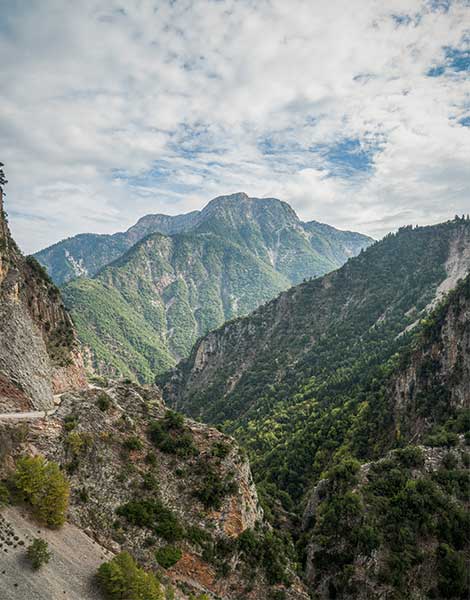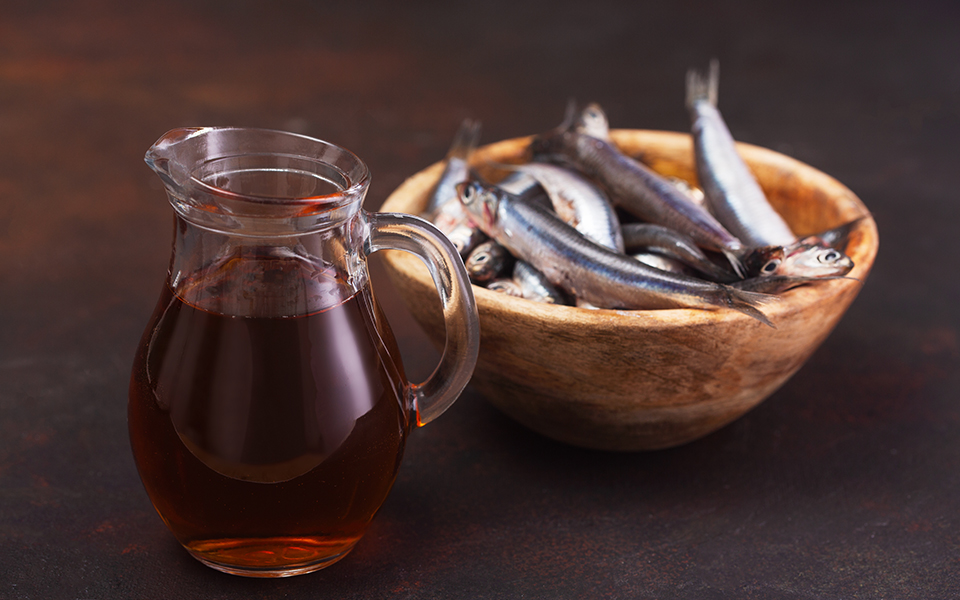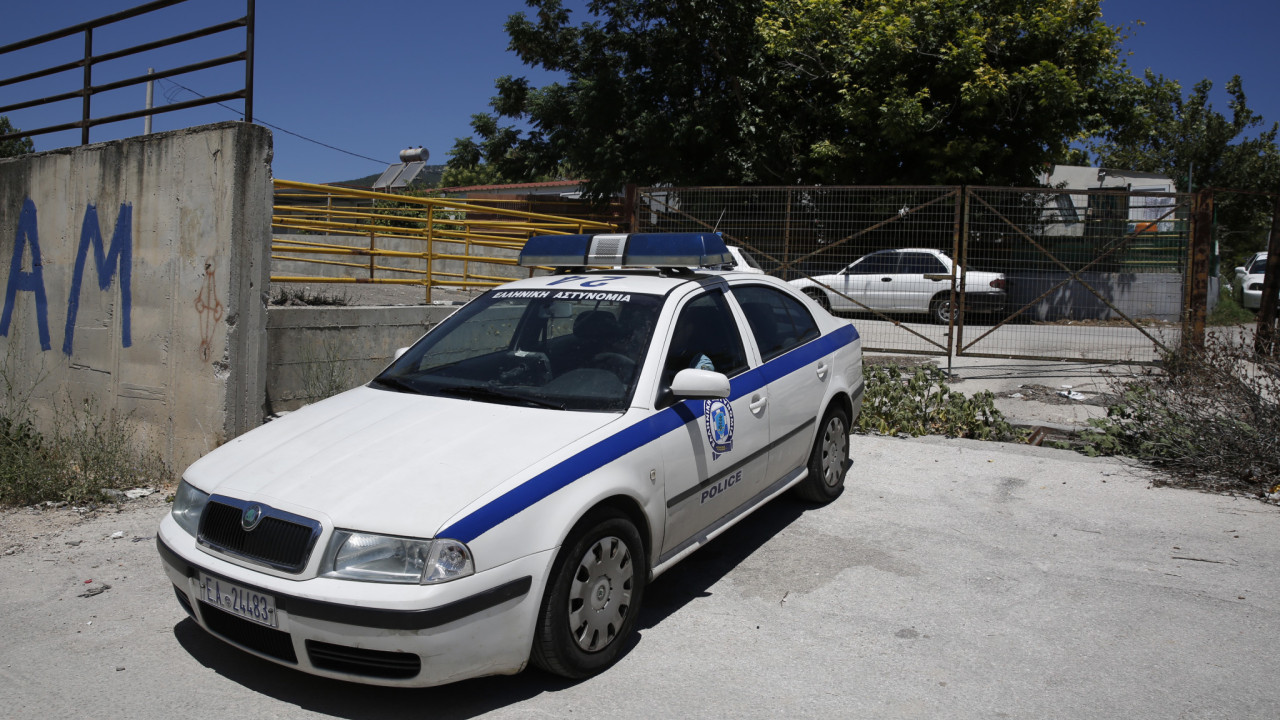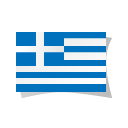One of the most rewarding road trips in Central Greece is the route that connects Karpenisi with Lake Trichonida and Agrinio.
Evrytania is Greece’s smallest regional unit in terms of area, the most sparsely populated, and the most mountainous. Within its borders lie some of the most remote villages in the country, either nestled between the slopes of the Agrafa mountains to the north or further south at the foothills of Mount Velouchi. While the road network is limited, one particularly scenic route begins east of Karpenisi and stretches 68 kilometers to Lake Trichonida. This narrow, winding provincial road winds through lush landscapes, charming settlements and striking landmarks, making it well worth the journey.
 Megalo Chorio is one of the most beautiful villages in the area, worth visiting for a stroll through its charming alleys and lovely squares.
Megalo Chorio is one of the most beautiful villages in the area, worth visiting for a stroll through its charming alleys and lovely squares. © Perikles Merakos
Megalo Chorio is one of the most beautiful villages in the area, worth visiting for a stroll through its charming alleys and lovely squares.© Perikles Merakos
Starting from Karpenisi, you’ll encounter some of the most well-known villages of Evrytania. In the village of Koryschades, you’ll find the Museum of National Resistance (Tel. (+30) 22370.249.96, open 10:00-15:00, closed Tue and Wed). The museum is housed in the old village school, where, in May 1944, the National Council of Free Greece was formed by the “Mountain Government” during the Nazi occupation.
A few kilometers further down, just outside the village of Klafsi and right next to the provincial road, you’ll come across Newton Park (7th km Karpenisi-Proussos, Tel. (+30) 22370.246.14, open weekends 11:00-15:00), a themed park offering plenty of fun activities for children.
 The all-stone village of Koryschades.
The all-stone village of Koryschades. © Perikles Merakos
The all-stone village of Koryschades.© Perikles Merakos

© Perikles Merakos
© Perikles Merakos
In the villages of Mikro Chorio and Megalo Chorio, you’ll find many options for a lunch break. The taverna To Choriatiko (Neo Mikro Chorio, Tel. (+30) 22370.412.57), serves traditional Greek fare such as lamb in lemon sauce, giouvetsi, grilled meats, and spit-roasted delicacies. At Aghios Athanasios taverna (Megalo Chorio, Tel. (+30) 22370.412.50), don’t miss the savory homemade pies, delicious grilled lamb chops, and orange pie for dessert. Following the banks of the Karpenisiotis River, the road crosses the Dipotama Bridge, only seven kilometers from the village of Proussos.
Before entering the village, you’ll see the impressive Proussos Monastery, built into the cliffs. Dating back to the 9th century AD, the monastery played a key role during the Greek War of Independence in 1821 – hero Georgios Karaiskakis even sought refuge in its cells for a time. Although it suffered severe damage at the hands of the Germans in 1944, the monastery has since been gradually restored.
 The Holy Monastery of Proussos is built on the rocks.
The Holy Monastery of Proussos is built on the rocks. © Perikles Merakos
The Holy Monastery of Proussos is built on the rocks.© Perikles Merakos
Just past Proussos, it’s worth visiting the Stremmenos charcuterie (Tel. (+30) 22370.808.10, open daily 08:00-14:00), where you can watch traditional methods of curing meats and pick up local specialties such as air-dried salami, leek sausage, and prosciutto. From here, you can also access the trail to the Black Cave (Mavri Spilia). This 30-minute forest hike passes waterfalls, wooden bridges, and resting spots, before reaching at a historic cave that once served as a hideout during both the Ottoman and German occupations.
The road climbs through dense vegetation before descending toward the villages around Lake Trichonida. In the village of Thermo, visit the stone-paved square with its plane trees and sculptures, and don’t miss the Thermo Archaeological Museum (Tel. (+30) 26440.233.36, open daily except Tue 8:30-15:30), where you’ll find artifacts from a prehistoric settlement.

 2 weeks ago
35
2 weeks ago
35








 Greek (GR) ·
Greek (GR) ·  English (US) ·
English (US) ·